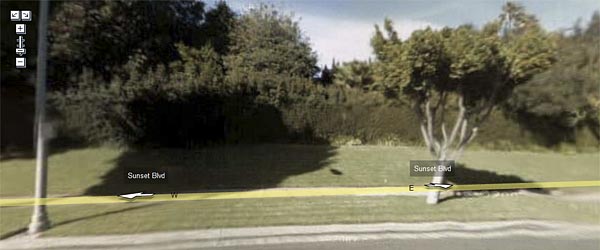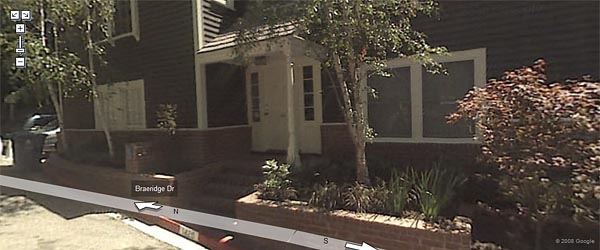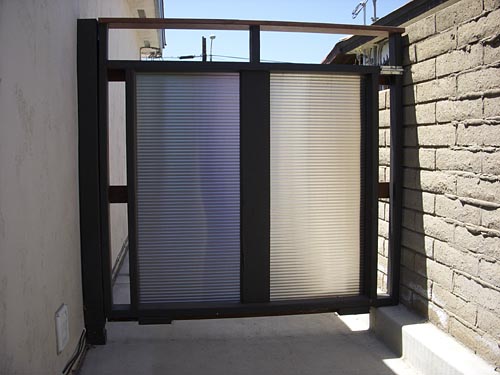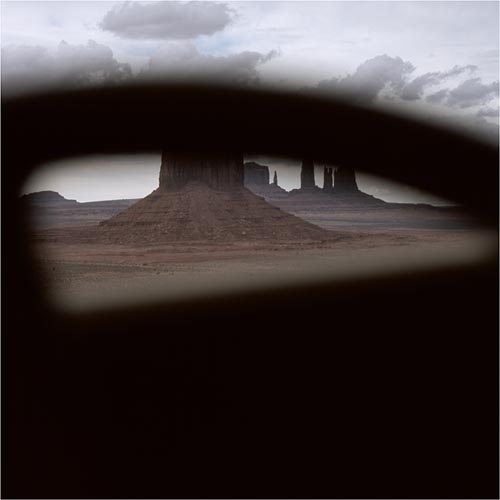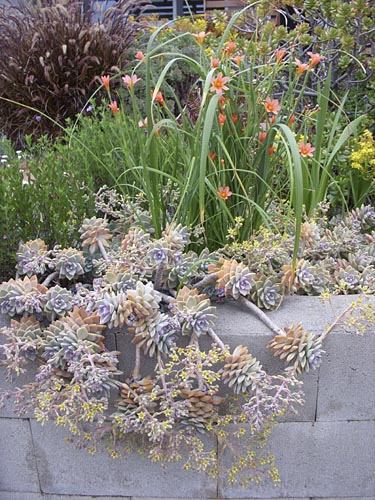Imagine opening your mailbox and getting one of those seed catalogs with no pictures and names you’ve never heard of before–something like the J.L. Hudson, Seedsman listings, for instance, which just hit my house a couple days ago. With a little work you can find out at least something about almost any plant you’re interested in on the web. Often the results from a general search engine query are a mess to sort through, and I wanted to see if I could find out information on general plants by testing out specific databases that would have predictable interfaces and results.
I’ll look at more general resources like Wikipedia and the USDA’s Plants Database in the future, but for this little study I narrowed the databases to those available at two of the big garden sites, the PlantFiles at Dave’s Garden and Hortiplex at GardenWeb. Both Dave’s Garden and GardenWeb offer memberships that give you various privileges, though Dave’s Garden charges for their premium services. Both sites let you look for information in addition to just plants, but to simplify this study I’ve limited my scope to searching the plant databases.
As of last Friday, the press kit for PlantFiles had this background:
The PlantFiles is the world’s largest collaboratively-developed database of plants, created by real gardeners from around the world. It is targeted toward serious gardeners and professionals, but is easy enough for anyone to use. Currently 162,130 plants are featured along with images and notes; more are added each day. Submissions are subject to peer-review, with errors corrected by a team of editors. PlantFiles is the fastest-growing feature of DG, and is responsible for attracting more than half of all new subscribers.
On the same day the Hortiplex page said it contains “101,133 records, 78,477 links, 50,744 taxa, 50,389 cultivars, 14,409 images/image links, and 1,651 vendor links.”
Side-by-side comparison: On one day (April 4, 2008) I looked up a collection of plants in both databases, one database immediately after the other. I selected general plant names, names of specific varieties, and nicknames for plants. My sample was pretty small–16 queries in all–but I think the results give a good sense for what the databases offer. The results of what I found are listed in the table below.
Entering queries: The search interfaces behave a little differently. PlantFiles automatically turns queries of more than word into keywords booleaned together with an “or” operator. If you don’t want that to happen, you can do an exact text search by placing the words together within quote marks. That’s similar to how Google and probably most other search engines operate, so if you’ve mastered that, you can search PlantFiles in the same way. All the multi-word searches in the table below for PlantFiles were entered in quotes except where noted.
Hortiplex behaves differently. It automatically assumes right-hand truncation, so that a search for something like “kale” (which I used below) will pull up various kale plants, but it also will retrieve Hemerocallis ‘Kaleidomania’ because “kale” is how the word “Kaleidomania” begins. I couldn’t find a way to defeat that “feature,” either by using quotes alone, adding a space to the end of “kale,” or by adding a space and wrapping the whole thing between quotes. Maybe there’s a way but I couldn’t find it, and I couldn’t find any documentation on how to search. This feature isn’t a problem all the time, but I’ve noted some of the gross results below.
|
Dave’s Garden PlantFiles |
GardenWeb Hortiplex |
| Petunia |
244 hits
With separate hits for the generic P. hybrida plus additional hits for specific cultivars and other plants that have “petunia” in their name.
Many hits with photos. |
43 hits
1 hit for genus; garden petunia varieties clustered together under P. hybrida; other hits for various species–various petunias and plants that have “petunia” in their name. 11 hits with images or links to images. |
| Double Delight rose |
0 hits using this exact string; 1 hit using string “rose double delight”; 14 hits using shortened string “double delight”; 8092 hits when no quotes used around search string. The single hit for this exact cultivar had 44 images. |
1 hit
With image. |
| Sarracenia |
152 hits
Includes species, forms of species, and many hybrids. Many hits with 1 or more photos. |
56 hits
Includes species, forms of species, and cultivars; 20 listings with photos. |
| Sarracenia purpurea |
5 hits
Found the species, one form, one subspecies, and two varieties. Four of five hits with 1 or more photos apiece. |
5 hits
Resulted in the type species plus four varieties, including two cultivars. Two hits with images and/or links to images. |
| Hinoki cypress |
3 hits
Each with 1 or more images. |
2 hits
1 for species and 1 for cultivar. 1 hit with 3 photos. |
| Dianella |
10 hits
Includes 6 species plus 4 varieties or cultivars. 9 with 1 or more pictures. |
7 hits
1 for genus, 6 species. 1 with image. |
| Salvia divinorum |
1 hit
With 3 images. |
1 hit
With 1 image. |
| black-eyed susan |
50 hits
Includes hits for several species, but the majority are for cultivars of Rudbeckia hirta. 34 hits with 1 or more pictures apiece. |
10 hits
2 for genera, 8 for species. 7 hits with pictures. |
| kale |
93 hits
All examples of kale, flowering kale, or other appropriate hits. 23 hits with images. |
18 hits
Included 3 groups of kale species, 5 kale species, 10 other hits that had text string “kale” though weren’t the vegetable. 6 hits with images or links to images, only 1 of these for the vegetable. |
| tomato Mr Stripey |
1 hit
With 3 photos. |
0 hits
Also tried “Tomato Mister Stripey” but still no hits. |
| alpine strawberry |
9 hits
All hits for cultivars of 1 species. 6 hits with 1 or more photos. |
1 hit |
| mizuna |
6 hits
Hits for 2 species, 3 varieties, 5 cultivars. 2 hits with 1 or more photos. |
1 hit |
| muscat grape |
0 hits / 1 hit for “grape muscat” / 262 hits for “muscat grape” entered without quotes, with desired entry in the #2 position. |
0 hits for “muscat grape” or “grape muscat” |
| lettuce Nevada |
1 hit |
0 hits / only hit for general “lettuce” search. |
| lemongrass |
0 hits as 1 word / 3 hits for “lemon grass,” including 2 hits with several photos. |
1 hit / 1 additional hit for “lemon grass,” the latter with image. |
What did I think? As you can see PlantFiles at Dave’s Garden pulled up the most results most of the time. If you’re looking for a specific cultivated variety, it’s the most likely to have what you’re looking for. I did notice that Hortiplex does have a pretty decent sampling of rose varieties, though it didn’t find the variety of lettuce I was interested in. Still, there are sure to be times you don’t want to sort through 244 different petunia entries for general information. The lack of plant name authority control at both sites, at least for common names, can cause spotty, incomplete results of the sort you can see in the “lemongrass” example above, where “lemondgrass” and “lemon grass” were considered different things. Some sort of fuzzy “did you mean instead?” searching and retrieval would be nice, but these are sites without the resources of Google.
The displays in PlantFiles were fairly random, and those big sets of results sometimes took a long time to make sense of. Multi-word searches seemed to generally cluster at the top the results of your query in some sort of relevance order. Hortiplex offers a much more rational display of the results, listing the best matches at the top, and organizing things by genus, then species, then variety. Families, genera, species (including subspecies and varieties), grexes/groups, and cultivars are all displayed in different colors, so it’s easy to tell them apart.
Both sites offer ways for users to enter new plants, though Hortiplex’s method seemed less elegant. There’s a basic review of proposals for new plants before they go up on both sites. Both sites offer some basic scientific classification information that seemed pretty reliable, however there isn’t much of it–mainly information like family, genus, and species. Beyond the information on classification, PlantFiles offers some basic generic cultural information along the lines of plant size, hardiness, soil needs and propagation methods. Unfortunately many of the supposed hits on Hortiplex are just links out to other sites, and I found that some of the links don’t go anywhere.
Once a plant is in the database, both sites offer ways for users to contribute information and photos. To see the images or comments required scrolling down in PlantFiles or clicking on a link in Hortiplex. I preferred the scrolling method, though PlantFiles requires an additional click when there are more than seven images. Both sites have knowledgeable users, so you’re likely to find good information about at least some of the plants.
In the aesthetics department, I’d say that both sites are…functional. You go to the sites for the information, not for ideas on how to make you web page look hip.
At some point in the future I’ll take a look at some broad encyclopedias and at more specialized databases. I know that there’s a rich compost heap of information out there!
Just for fun, you can try out your own search comparisons using the little search forms below, courtesy of some basic HTML code that’s offered at each site.

